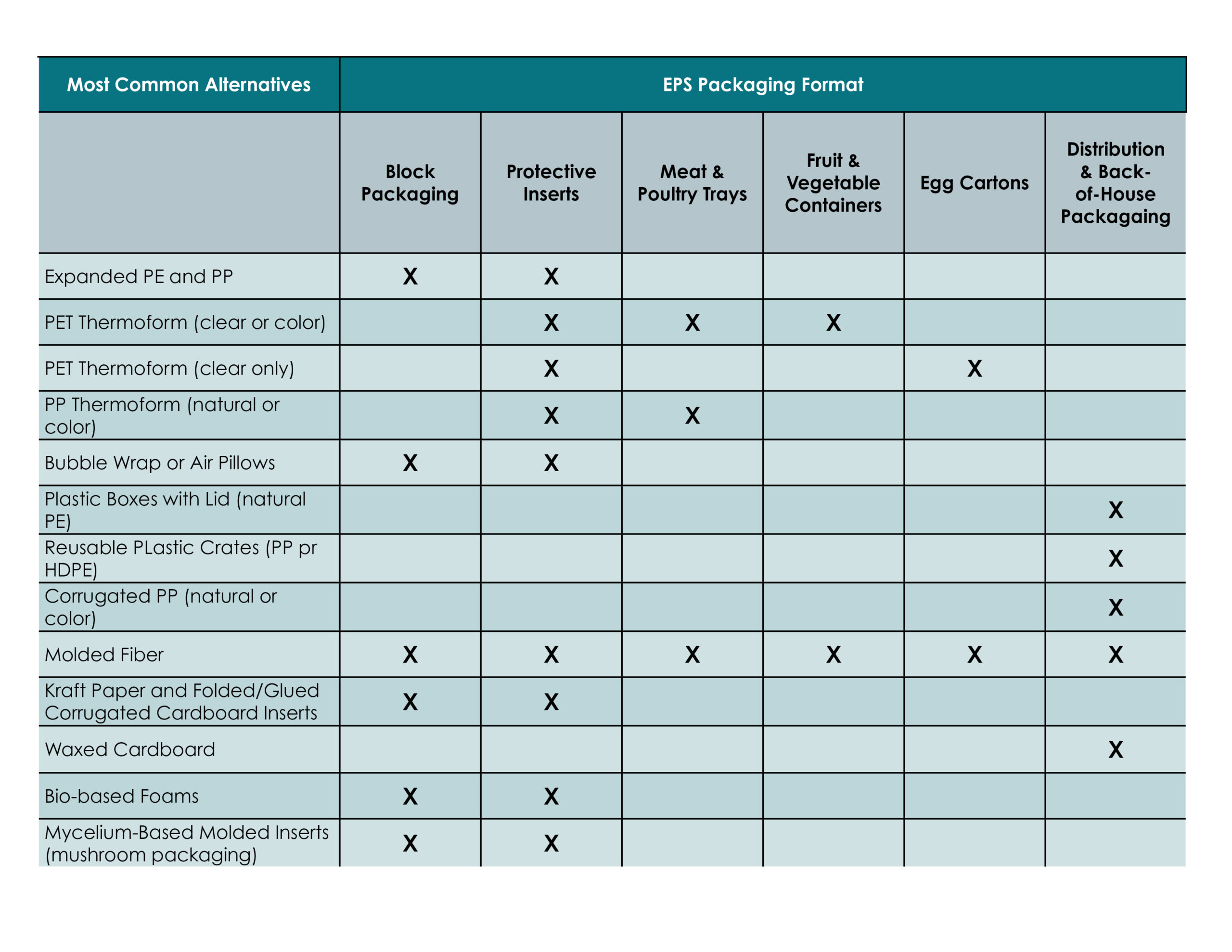An exploration of circular solutions for foam packaging
Packaging plays a critical role in protecting products — including everything from food to household goods – from being harmed during their journey from conveyor belts to household shelves. But to reach a truly circular economy in the U.S., we need all packaging to be eliminated, reusable, recyclable or compostable.
Many companies have set goals to achieve this by 2025 such as those engaged in the U.S. Plastics Pact. The Recycling Partnership is helping these and other companies make progress toward their goals through the Pathway to Circularity, a solutions-based framework to assess packaging recyclability. In some instances, progress will require investment to modernize the system to advance recycling of materials such as polypropylene. In others, companies may consider changing packaging to materials that are more compatible with the current recycling system (learn more about how Plastic IQ is available to help companies understand the trade-offs posed by packaging challenges such as the ones described here. For more information, contact Rachel Kipar at rkipar@recyclingpartnership.org).
EPS foam (foam) packaging has traditionally played a unique role in the product protection sphere. Its lightweight, moldable properties make it highly durable resulting in its use for a slew of products – everything from eggs to televisions. But its lightweight nature also makes it challenging to recycle.
Because foam packaging contains so much air, the cost to transport it is high for the weight of material and the value received for it. There is significantly less volume of foam packaging on the market compared to plastics such as PET and HDPE bottles, and Materials Recovery Facilities (MRFs) need a certain volume to move through their facilities to make it economical to reserve space for them. Foam packaging can also break up easily, adding to the difficulty to sort it for recycling.
Some companies have sought alternatives to this packaging type or have set goals to eliminate it. To help those interested in finding alternatives, The Recycling Partnership researched available options focusing on the following:

For each of these alternatives, The Recycling Partnership evaluated availability, protective properties, recyclability, and other benefits. Through this research we found that while the right alternative depends on the needs of each company, there are available options for foam packaging that are recyclable. For example, molded fiber is now a commonly used alternative for egg cartons, and is increasingly used in packaging for meat trays, lighting, and other products. Honeycomb Kraft paper and folded or glued cardboard are other foam alternatives that are both recyclable and can be used to protect products in transport.
Plastic air pillows can be used in e-commerce packaging to protect products during shipping. Currently recyclable through store drop-off programs, this packaging type is not currently accepted in curbside recycling systems. However, there are active efforts to create new curbside outlets for the recycling of plastic air pillows and other polyethylene films, such as The Recycling Partnership’s Film and Flexibles Coalition. Joining these efforts can strengthen the circularity of this packaging type.
Some foam packaging alternatives are not yet recyclable but are advancing on the Pathway to Circularity. For example, PET thermoforms are lightweight and relatively simple to manufacture. They can be used to protect fragile items and the market for them can adapt to meet any demand growth. While PET thermoforms are currently recyclable for less than 60% of U.S. households, there is already significant infrastructure in place to recycle PET. Companies looking to substitute PET thermoforms for foam packaging could consider
Seeking more circular packaging solutions for foam packaging will not necessarily be a straightforward transition. One of the advantages of some foam packaging like EPS, in addition to its lightweight and protective nature, is its low cost. The alternatives identified in this research will likely come at a higher price. However, as more companies reach for these alternatives, demand will increase, supply chains will strengthen, and eventually, costs for these alternative options may fall. These investments are critical to activating a circular economy and stopping waste from entering our environment. The interest in these alternatives is high and the time to act is now.



